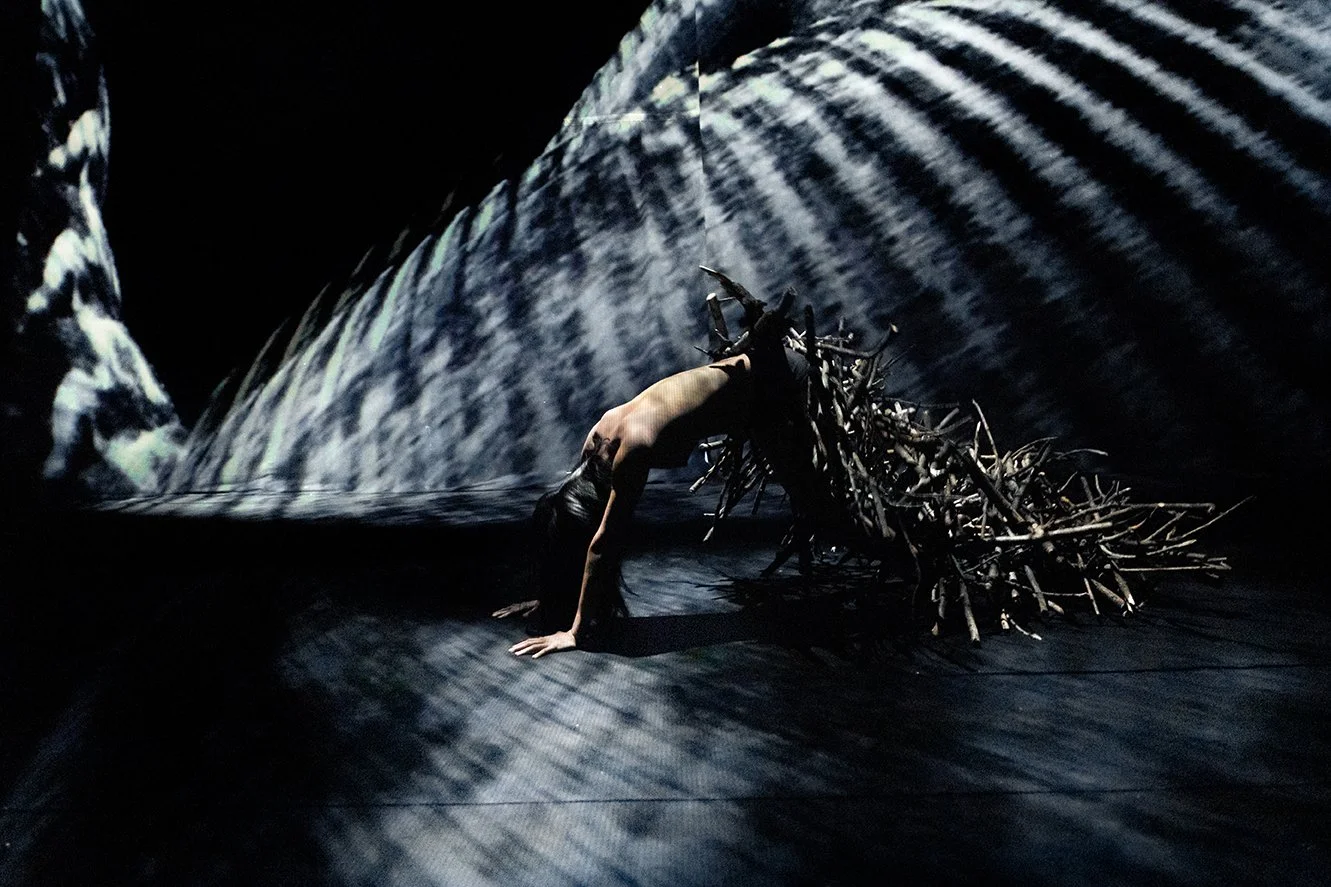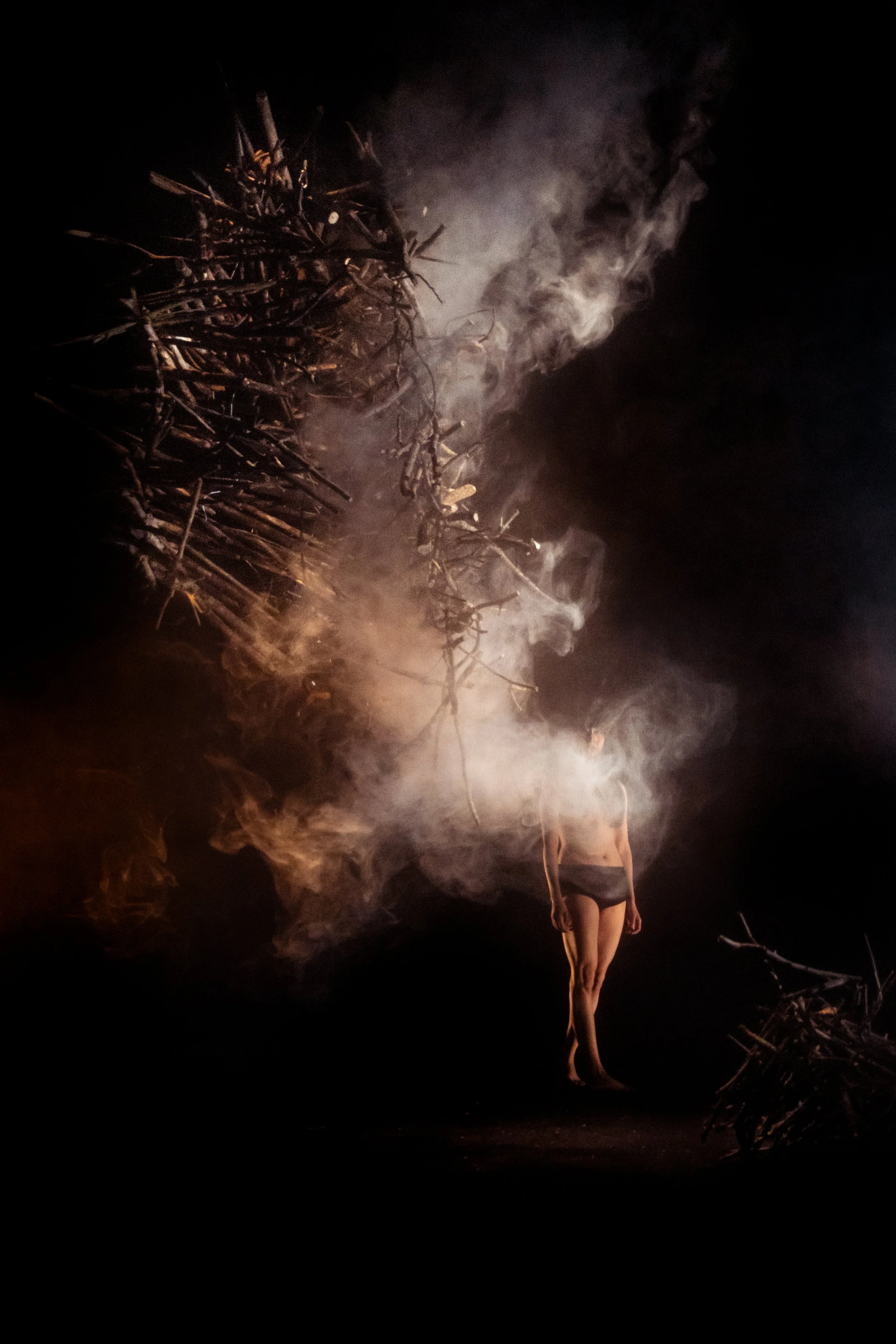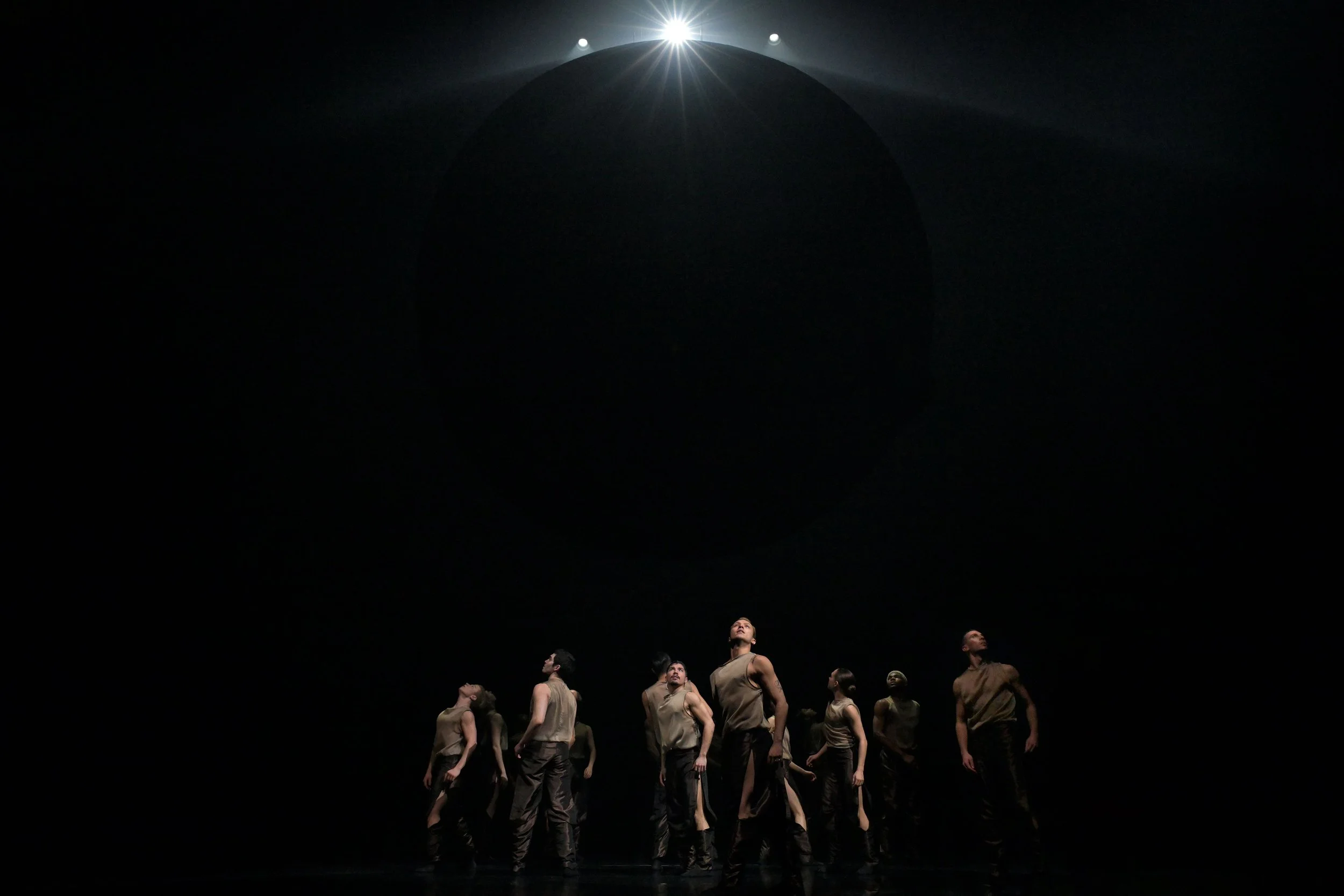With Forêt, multitasking French musician Franck Vigroux conjures dreamlike world of dance, visuals, and sound
Compagnie d’Autres Cordes’ sensorial universe blends the shamanistic and the cosmic via throbbing electro score, haunting video imagery, and slow, eerie dance
Compagnie d’Autres Cordes’ Forêt melds striking costumes with video projections and waves of sound. Photo by Quentin Chevrier
Compagnie d’Autres Cordes’ Forêt is at the Scotiabank Dance Centre from October 20 to 22
VETERAN FRENCH COMPOSER and musician Franck Vigroux is capable of building entire, haunting worlds of sound—colossal electronic waves, reverberating synth, punishing beats, and echoing, disembodied vocalizations. Close your eyes and they conjure everything from sci-fi galaxies to the primal and timeless.
But fortunate Vancouver audiences will definitely want to keep their eyes open for the surreally dazzling Vigroux performance piece coming to the Scotiabank Dance Centre this week. His Compagnie d’Autres Cordes’ multidisciplinary Forêt creates a sensorial universe that melds his incredible electronic soundscape with eerie video imagery; stunning lighting and set design; and slow, mesmerizing dance.
Best described as a media artwork brought to life, it promises to be an epic experience, staged as it is in the intimate Faris Family Studio. (See the mindblowing trailer below.) Amid the throbbing synthetic score, a figure appears, dressed in a tangle of crude sticks, moving amid jungle mists, spiralling cosmos, and glaring space-age lights.
Vigroux says Forêt’s strange mix of the natural and the supernatural came from a variety of influences that converged as he flew over the Amazon a few years ago—exemplifying the way the composer free-associates complex ideas in his multilayered works.
As he glided over the thick green jungle, he was reading French anthropologist Claude Levi-Strauss’s Tristes Tropiques, a memoir about travels and work with remote tribes.
“At the same time I am checking the news, and they were talking about the Canadian missionary who died trying to evangelize to a isolated tribe on an island close to India,” he says, referring to John Allen Chau, an American who was killed by the Sentinelese, an “uncontacted” people in 2018. He adds: “When I grew up, I went to a very Catholic church. I spent all my time close to religion and doctrine. And so indoctrination was the first idea for Forêt.”
Those concepts led to research into black holes and shamanism, not to mention the psychological concept of the forest as the subconscious. Vigroux then took those ideas into the studio with his collaborators, including choreographer Azusa Takeuchi, dancer Nina Berclaz, costumes designer Margot Dusé, and visual artist Kurt d’Haeseleer, who created the dazzling video projections.
“We started to create our own world, developing this character that is maybe a shaman who communicates with these lights, these black holes, and all these elements on stage, wearing this big costume made of branches,” he says. “For this show, the idea of shamanism or communicating with the spirits or the cosmos was important.”
Forêt. Photo by Quentin Chevrier
Vigroux is listed as composer and director, and his co-creators work in what this self-taught artist describes as a “very intuitive” process. “Also, we have known each other very well—for some of them we’ve collaborated for more than 10 years and we’ve learned how to work together. Of course we all come in with concepts–from books, film, all kinds of things.”
Vigroux adds that his team also shares similar tastes—the most noticeable one an affinity for slow, unearthly movement, whether that’s in the hypnotic tempos of his music, the video imagery, or the dance.
Some have described the dance as Butoh-like, but Vigroux stresses, “She doesn’t have any butoh training; she learned contemporary dance in France. There is absolutely no butoh inspiration.”
Vigroux traces his passion for blending art forms back about 20 years ago, when he started making ultra-experimental films with Super 8 cameras.
“That’s where I first learned about making sound and visuals together, trying to make a kind of synesthesia,” he explains.
Later, he would go on to compose music for the stage, collaborating with theatre and dance artists—and starting to develop his own interdisciplinary projects.
For a sense of how different his productions can look, consider Vigroux’s other stunning touring show Flesh, a work that draws on his own experience of a major car accident, as well as the work of Crash author J.G. Ballard. An exploration that follows the moment that comes after the shock of impact and trauma, it features several alluring, chrome car engines dangling from the ceiling and becoming living artworks that almost “dance” with the performer.
In all his works, Vigroux invites audiences to open themselves to the non-narrative sensory experiences; he loves when people bring their own interpretations to the journey.
As for his own journey, it still very much includes more traditional concert performances, as much as Vigroux continues to bust categories in his interdisciplinary work. As adept at guitar as he is at electroacoustic soundscapes, he works regularly as a solo musician (check out 2019’s uncompromising, beat-bashing album Totem), but also collaborates regularly with other musicians, from the late Mika Vainio to Elliott Sharp and Zeena Parkins.
With typical humility, this unassuming, prolific visionary shrugs his incredible diversity off with a small laugh. “Yesterday, I was just playing with no video in a music festival in Montreal and that was great,” he relates. “I just work, and when I have an opportunity, I just accept it. I can do both! And I love to do both.”















